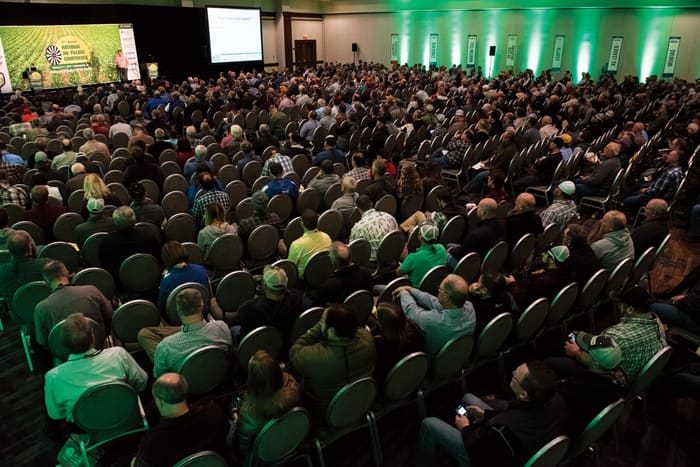No-Till Farmer
Get full access NOW to the most comprehensive, powerful and easy-to-use online resource for no-tillage practices. Just one good idea will pay for your subscription hundreds of times over.

Nearly 900 no-tillers converged in Indianapolis in January to share ideas and learn how to improve their no-till operations at the 27th annual National No-Tillage Conference.
In general sessions, roundtable discussions and classrooms, along with networking sessions with speakers and sponsors, attendees built up their knowledge on a range of topics — from no-tilling with organic practices, to tips for aerial scouting, to managing inputs more efficiently to hearing about prospects for autonomous farm equipment.
The editors of No-Till Farmer compiled some of the top tips and takeaways from the conference, which convenes again Jan. 7-10, 2020 in St. Louis, Mo.
No-tillers know that for plant disease to occur there must be a susceptible host, the plant pathogen has to be present and the weather conditions need to encourage the development of that pathogen. And Carl Bradley says no-till fields are slightly more likely to develop disease because some plant pathogens can overwinter in stubble.

BOOK SIGNING. No-Till Farmer editor, Frank Lessiter, shakes hands with attendee Ray McCormick from Vincennes, Ind., after signing a copy of his new book, From Maverick to Mainstream: A History of No-Till Farming.
In the past few years, the plant pathologist from the University of Kentucky says, new diseases have been spreading across the U.S. while others have demonstrated new behaviors no-tillers might want to watch for: